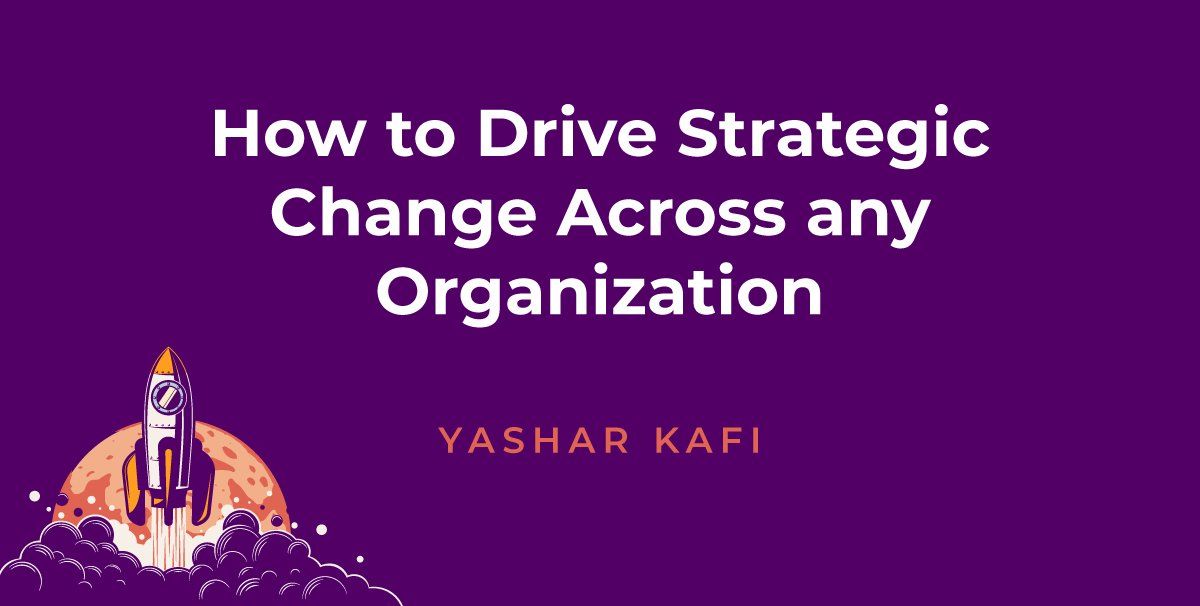How to Drive Strategic Change Across any Organization
To drive strategic change, leaders must have their finger on the pulse of what’s going on in the wider world. They must know what their employees face daily and be aware of exactly what they’re up against.
The perfect place for a leader to be is at the intersection of innovation, technology, business, and trust. Let’s dive into how each of these fundamental facets will help you drive strategic change across your organization.
Using Innovation for Strategic Change
I hate to be the one to have to break it to you, but being best in class is no longer enough of a strategy. Instead, we must be innovative and creative in our approaches to integrating change and driving strategic change. I would go so far as to say that we need to get radical about innovation. Why? Because sometimes radical is what is required to shake things up and instigate a catalyst for forward motion, fresh ideas, and more.
The Management Study Guide explained well when it stated, “Innovation can produce sudden and dramatic changes to the way business is done and the way consumers experience changes to the products and services made by the companies.”
One real-world example of a successful company that has used innovation for strategic change is 3M. The company has world-class innovation teams and facilities that are constantly pushing the envelope and trying new things to drive change throughout the company and keep consumers happy and competitors playing catchup.
Using Trust to Drive Strategic Change
Another aspect that is pivotal for successfully driving strategic change is establishing trust. Think about it: How can we ever expect to change our organization if our teams and stakeholders don’t trust us?
Sadly, this is one facet that becomes a pitfall for many companies. According to Forbes, trust in the office just isn’t there, presenting a huge hurdle for leaders wanting to make headway toward strategic change. Specifically, Forbes reported that 58% of workers polled said they trust a stranger more than their boss.
The harsh truth is that without trust, we have nothing. So, how do we build trust as leaders? Respect the team that already exists, including their roles and what everyone does. Also, embrace the truth that vulnerability isn’t a weakness, and even more than that, it is a crucial part of the foundation needed to build trust upon.
Technology’s Role in Change Management
The good news is that most organizations are comfortable with at least some sort of technology and digital transformation. According to Forbes, 70% of companies already have a digital transformation strategy in place or are currently working to establish one.
But the question remains: Why do we still struggle so much with smoothly implementing technology? And more importantly, how do we stop that struggle?
The leader of the future will need to be aligned to technology. According to Deloitte, 69% surveyed expect tech leaders to be change instigators. Are you in the know and ready to lead your company to the next level digitally and technologically?
Business School of the Future
Over the last few years, we’ve seen a massive decline in the value of the MBA. As of 2019, there was a decline in attendance for six consecutive years. Perhaps the new business school will teach leaders how to intersect these things to drive strategic change. One can hope.
Leaders must understand what their direct reports do day-to-day, the challenges they face, and the direct impediments to their success. Additionally, knowing about innovations, technology, and business practices is key.
Interested in learning more insights about this subject and more? Head over to our blog to search through our many blog articles, or contact us today.




